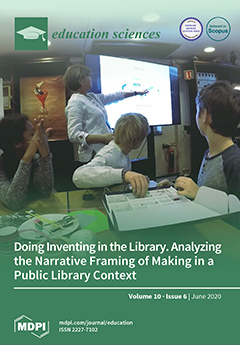Yoga is a growing sport in our current society, but we know little about it; what repercussions it has, what benefits its practice brings, repercussions in the educational environment, etc. Therefore, the objective of the article was to analyze if it is possible
[...] Read more.
Yoga is a growing sport in our current society, but we know little about it; what repercussions it has, what benefits its practice brings, repercussions in the educational environment, etc. Therefore, the objective of the article was to analyze if it is possible to design a scale of perception that relates yoga, teacher training, sport, benefits of yoga, and inclusive sport. The objective was to analyze and demonstrate the relationship between variables determining how the academic performance of the students can be improved, since the practice of yoga influences on diverse areas that cause changes at brain level in the students, and it can lead to better attentiveness, memory, etc. For this, a descriptive, explanatory, and correlational research project has been carried out with a quantitative methodology. The analysis sample was made up of 1575 subjects, distributed as follows: 1191 students of the Degree in Primary Education of the University of Jaén (from first to fourth course) and 384 teachers corresponding to different public centers of the province of Jaén. In order to investigate the objective, an operational table was created to construct the Likert scale. The original scale consisted of 20 items reporting an alpha of 0.826, we achieved a reduction of four items, with a higher reliability (0.846), divided into five different dimensions. Likewise, construct validity was checked from a factorial analysis (KM0 = 0.787, Bartlett 0.000). The results of the research have been satisfactory, given that when analyzing the variables proposed in the initial objective, a high degree of correlation has been obtained between them, which supposes, applying it to the educational scope, a great incentive to carry it out in the educational centers, and, therefore, to improve the academic, personal, and social performance of the student.
Full article





